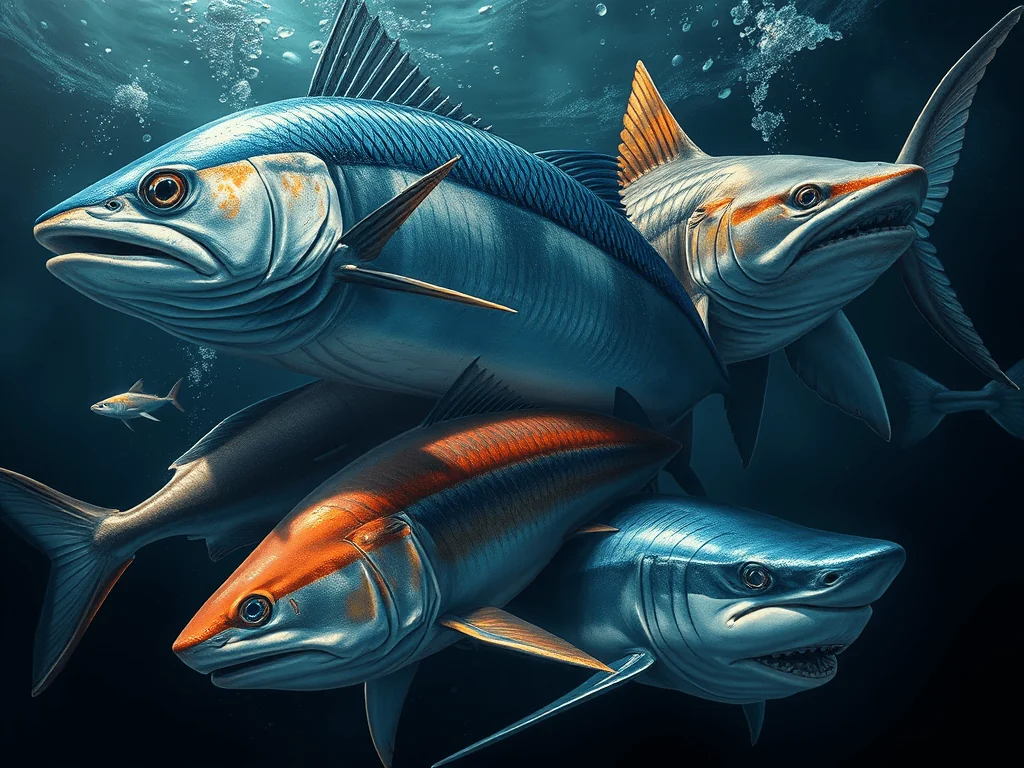Overfishing has caused many fish species to experience severe population declines, with some nearing collapse due to unsustainable fishing practices. Below are ten fish species that have been heavily overexploited, often referred to as being “eaten to death.”
1. Atlantic Cod (Gadus morhua)
- Issue: Overfishing led to the collapse of Atlantic cod stocks, particularly in the Northwest Atlantic, in the early 1990s.
- Status: Despite some recovery efforts, populations remain vulnerable or depleted in many areas.
- Why Overfished: Cod was a staple in Western diets and heavily targeted for centuries.
2. Bluefin Tuna (Thunnus thynnus, Thunnus orientalis, Thunnus maccoyii)
- Issue: All species of bluefin tuna are highly overfished, primarily due to the demand for sushi and sashimi.
- Status: Critically endangered (Southern Bluefin Tuna) to endangered (Atlantic Bluefin Tuna).
- Why Overfished: High market value and popularity in global seafood markets.
3. Orange Roughy (Hoplostethus atlanticus)
- Issue: Slow-growing and long-lived, orange roughy populations are easily depleted.
- Status: Populations have collapsed in many regions.
- Why Overfished: Its firm, white flesh became highly sought after in the 1980s.
4. Chilean Sea Bass (Dissostichus eleginoides)
- Issue: Overexploitation driven by high market demand in luxury dining.
- Status: Severely overfished in many areas despite efforts to regulate its harvest.
- Why Overfished: Marketed as a premium fish with a rich, buttery taste.
5. Sharks (Various species)
- Issue: Sharks are overfished primarily for their fins (shark fin soup) and meat.
- Status: Many species, including hammerhead and great white sharks, are endangered or critically endangered.
- Why Overfished: Slow reproduction rates and high demand for fins and cartilage.
6. Atlantic Halibut (Hippoglossus hippoglossus)
- Issue: Slow growth and low reproductive rates make it highly vulnerable to overfishing.
- Status: Critically endangered in many parts of its range.
- Why Overfished: High-value fish prized for its flavor and texture.
7. Pacific Sardine (Sardinops sagax)
- Issue: Populations collapsed due to overfishing and environmental changes in the mid-20th century.
- Status: Stocks have recovered slowly in some regions but remain volatile.
- Why Overfished: Used for direct consumption and as fishmeal in aquaculture.
8. Eel (Anguilla anguilla, Anguilla rostrata, Anguilla japonica)
- Issue: European eel populations have plummeted due to overfishing and habitat loss.
- Status: Critically endangered.
- Why Overfished: Demand for eel, particularly in East Asia and European cuisines.
9. Grouper (Various species, e.g., Epinephelus itajara)
- Issue: Grouper populations are overfished globally due to their high market value.
- Status: Many species are endangered or critically endangered.
- Why Overfished: Their large size and taste make them popular in fine dining.
10. Anchovy (Engraulis encrasicolus, Engraulis ringens)
- Issue: Overfished for direct human consumption and fishmeal production.
- Status: Fluctuates due to overexploitation and environmental factors.
- Why Overfished: Demand for anchovies in global cuisine and as a protein source for livestock and aquaculture.
Summary
Overfishing these species has profound ecological and economic consequences, often disrupting marine ecosystems and threatening global food security. Efforts such as marine protected areas, fishing quotas, and sustainable certifications (e.g., MSC) are steps toward alleviating pressure on these populations. However, global cooperation and responsible consumer choices remain essential for their recovery.

